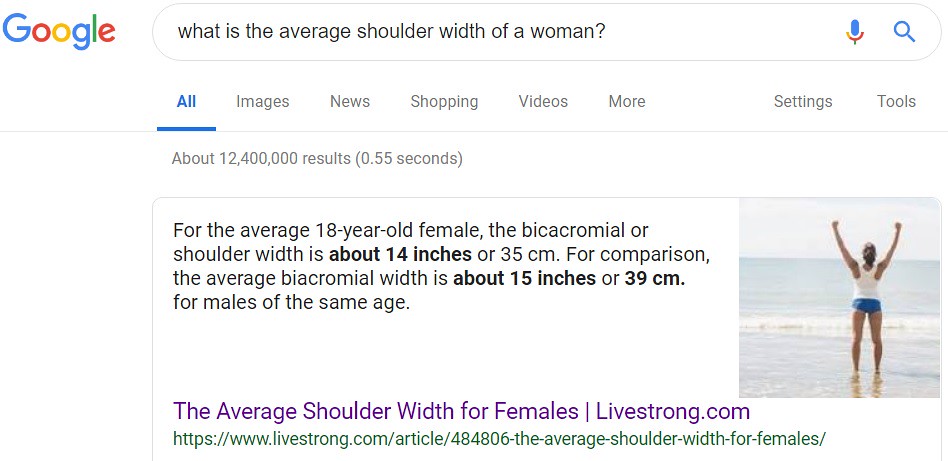Source: Mashable
Recently, in India, a couple of women decided to be the first two women to enter a Hindu Temple. This did not go over very well with locals since women are traditionally prevented (barred) from entering such temples in India. The result was protest as described in an article from the news paper 'Independent' titled "Protesters form 620km ‘women’s wall’ in India as female devotees pray at Hindu temple for first time" is shown below:
Millions of women have formed a human chain spanning 620km (400 miles) in support of women’s rights in India, as two female worshippers became the first to enter a Hindu temple that has traditionally banned them from entry.The ban on women “of menstruating age” from the Sabarimala temple in Kerala has become a flashpoint in a national argument over gender equality and religious freedoms. Despite a Supreme Court ruling in September to lift the ban, devotees have amassed in their thousands to keep women out by force.In the most dramatic display of support yet for women’s right to worship wherever they choose, millions gathered to form a “women’s wall” stretching from Kasargod in the northern part of Kerala to Thiruvananthapuram, the southernmost city and the state capital.
The thought of millions of women forming a chain (of protest) immediately entered my mind. For the two days after, I have not been able to actually get rid of the urge to confirm this through calculations -- using dimensional analysis. Below are the results of my calculations.
What is the average width of a female?
The first step in the analysis is to determine the average width of a women. Yes, for the purpose of 'approximation,' the search engine 'Google' will be consulted with the following question: What is the average shoulder width of a woman? The answer is shown below:
Source: Google
The answer indicates that the average (shoulder to shoulder) distance is equal to 14 inches. Measuring the distance shoulder to shoulder is shown below:
Source: WikiHow
Notice how the units of measurement are different for the values which we have obtained thus far. The total distance of the line formed by women is expressed in units of 'miles', whereas, the average shoulder width of a woman is expressed in units of 'inches.' Therefore, in order to use these two values to determine the total number of women needed to form the 400 mile long line, a unit conversion is needed. Either convert 'miles' to 'inches' or 'inches' to 'miles.'
For the purposes of this blog post, the latter conversion will be used to normalize the 'units' of measurement. If Google is consulted with the following question: How many inches are in a mile? The answer is shown below:
Source: Google
According to our search, there are 63,360 inches in a single mile. This is a conversion factor. With the conversion factor, the conversion from units of 'inches' to units of 'miles' is possible as shown below:
Converting 14 inches to units of 'mile' give us the equivalent distance (in miles) of 0.00022 mile.
With the units of measurement both expressed in units of 'mile', the total number of women can be determined as shown below:
Wow! The calculation reveals that the total number of women needed to form a chain 400 miles long is equal to 1,818,181 women.
Conclusion...
The recent protest in India from women coming together to form a single chain spanning 400 miles is truly astonishing. That is quite a feat to get that much of a presence for a given protest. I have further questions regarding how a person might coordinate such a protest in the form of a single chain. Amazing. News accounts peg the number of women needed to form a chain of length 400 miles over a given range of 'millions' to '5 million'. These are estimates based on a variety of sources - which remain to be questioned about their exact methodology in obtaining estimates of this size. The analysis above sheds light on a method which might get a reader close to an actual number to rest assure that there is logic behind the methodology (an approximation).
Related Blog Post:
Parameters: How many sticks of butter are contained in 7.5 million pounds of butter?
South Carolina Governor Henry McMaster asks lawmakers for $1,228,000,000 For Recovery from Hurricane Florence?
Boston Natural Gas Explosion Reveals Old Piping Needs Replacement - Enough To Travel To Colorado?
A Forecaster Predicts That Hurricane Florence Will Drop Enough Rain To Fill 18,400 Mercedes-Benz Superdomes
Hurricane Harvey Drops Enough Rain On Houston To Fill 560 Dallas Cowboy Stadiums
How Much Water Is Contained In All Oceans Around The Globe?
Storm Raises Water Level In Lake Cachuma By 31 feet, How Much Water Is That?
How To Make Sense Of Water Flowing At 100,000 Cubic Feet Per Second
Can 11 Trillion Gallons Of Water Fill 14,000 Dallas Cowboys Stadiums?
How Much Rain Did The East Coast Receive From Hurricane Matthew?
How Much Rain Did Haiti Really Receive?
How Big Was The "Water Bomb" Of Rainfall In Macedonia?
How Much Rain Did Elliot City (Maryland) Really Receive?
If The Mosul Dam Breaks, The City Of Mosul Would Be Under 65 Feet Of Water?
What is the volume of water in a few inches of rain?
Volume of Waste in the Mine Spill (in Brazil) Equivalent to 78 Deepwater Horizon Oil Spills






